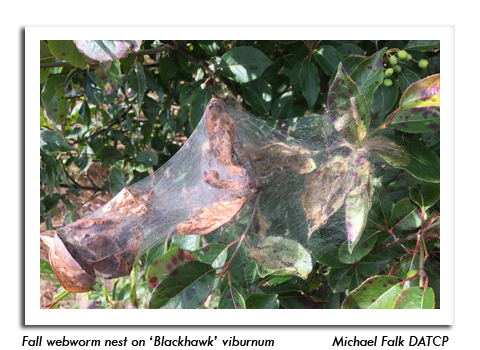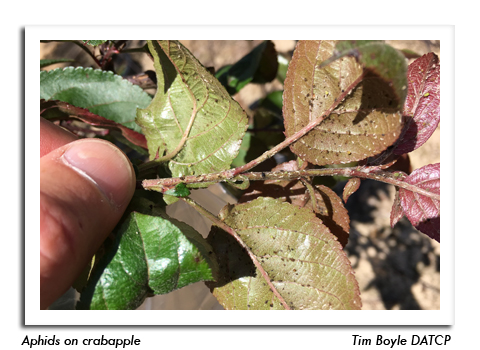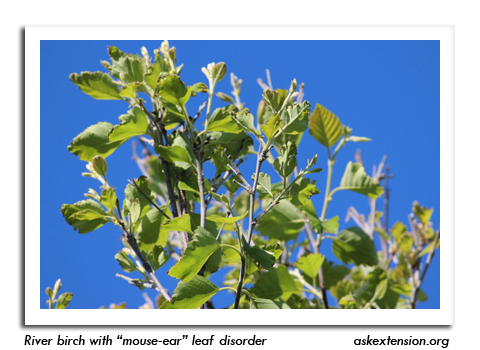
 |
|
|
Nursery & Forest
Volume 62 Number 13 Date 07/27/2017 YELLOW-BELLIED SAPSUCKER - Damage by this member of the woodpecker family was evident on young poplar trees at nurseries in central Wisconsin. Sapsuckers peck holes in trees and larger woody shrubs, feeding on the bark, sap and insects drawn to the sap. Their holes generally are not harmful, but some smaller or less vigorous trees and shrubs may be killed if drilling is extensive enough to girdle the trunk or stem. In rare instances, the damage can render trees unfit for sale. On individual trees, sapsucker feeding can be discouraged by wrapping hardware cloth or burlap around the affected area, or applying a sticky repellent material such as tanglefoot to the bark. VENTURIA SHOOT BLIGHT - Containerized quaking aspens at recently inspected nurseries were showing the black, blighted shoots indicative of this fungal disorder. The initial symptoms appear in May as irregular brown or black spots on the leaf surfaces, which later expand to new shoots and cause a characteristic shepherd's crook. The disease can often give aspen saplings a "zigzag" structure if the terminal leader is killed several years in a row, forcing lateral branches to become the new leader. Only young shoots and leaves are susceptible to this disease, though repeated attacks of the fungus on new growth can weaken and predispose trees to invasion by other pathogens. Secondary infection cycles can occur throughout the shoot elongation period if wet conditions prevail. The fungus overwinters in infected shoots, so management recommendations include removing fallen disease leaves, pruning blighted shoots below the margin between healthy and diseased tissue, and avoiding the most susceptible cultivars. FALL WEBWORM - The characteristic nests constructed by fall webworm larvae were observed during the past week in southeastern Wisconsin. This native species feeds on over 120 different species of deciduous forest, shade, fruit, and ornamental trees, but avoids conifers. Its nests or webs appear in trees later in the season than nests made by other web- and tent-making species found in Wisconsin. The larvae inside the nests are pale yellow with blackish lateral spots. Mature caterpillars develop tufts of silky hairs and are about one-inch long. Products containing Bt are effective against young caterpillars if the material penetrates the webbing, but manual removal of the webs is the preferred form of control. APHIDS - These insects continue to be prevalent in many nursery stock growing fields, with crabapple, cherry, and other sweet tree and fruit tree species showing the distinctive leaf-curl and puckering symptoms resulting from heavy aphid pressure. MOUSE-EAR OF BIRCH - River birch trees in a container-grown tree field were diagnosed with this growth disorder of potted nursery trees, which has been a sporadic problem since the 1970s. The stunted or "mouse-eared" leaves are associated with rootbound containerized stock and thought to be caused by nickel deficiency and/or water stress. A foliar application of nickel sulfate in mid-October or soon after budbreak can correct this condition. Lowering soil media pH to 5.0-6.0 is also recommended. -- Tim Boyle, Michael Falk and Konnie Jerabek - DATCP Nursery Inspectors 





|
|
|